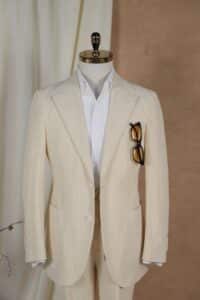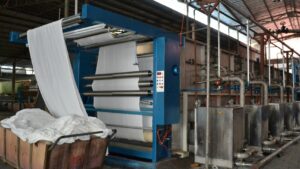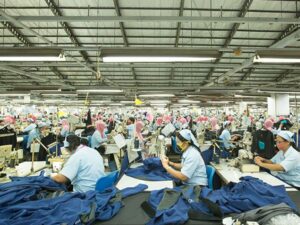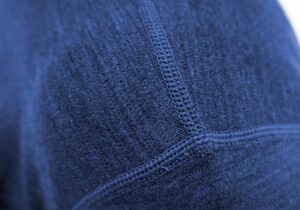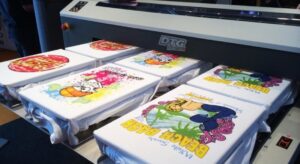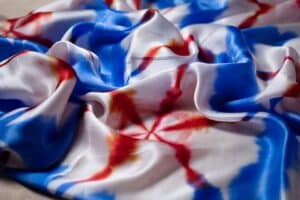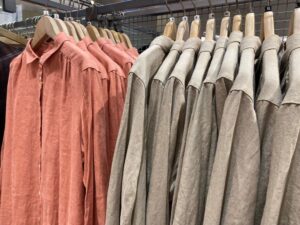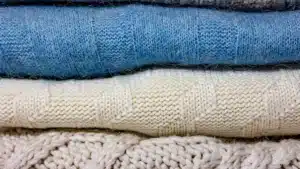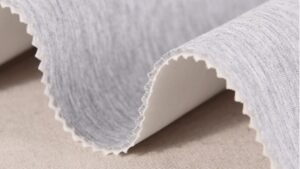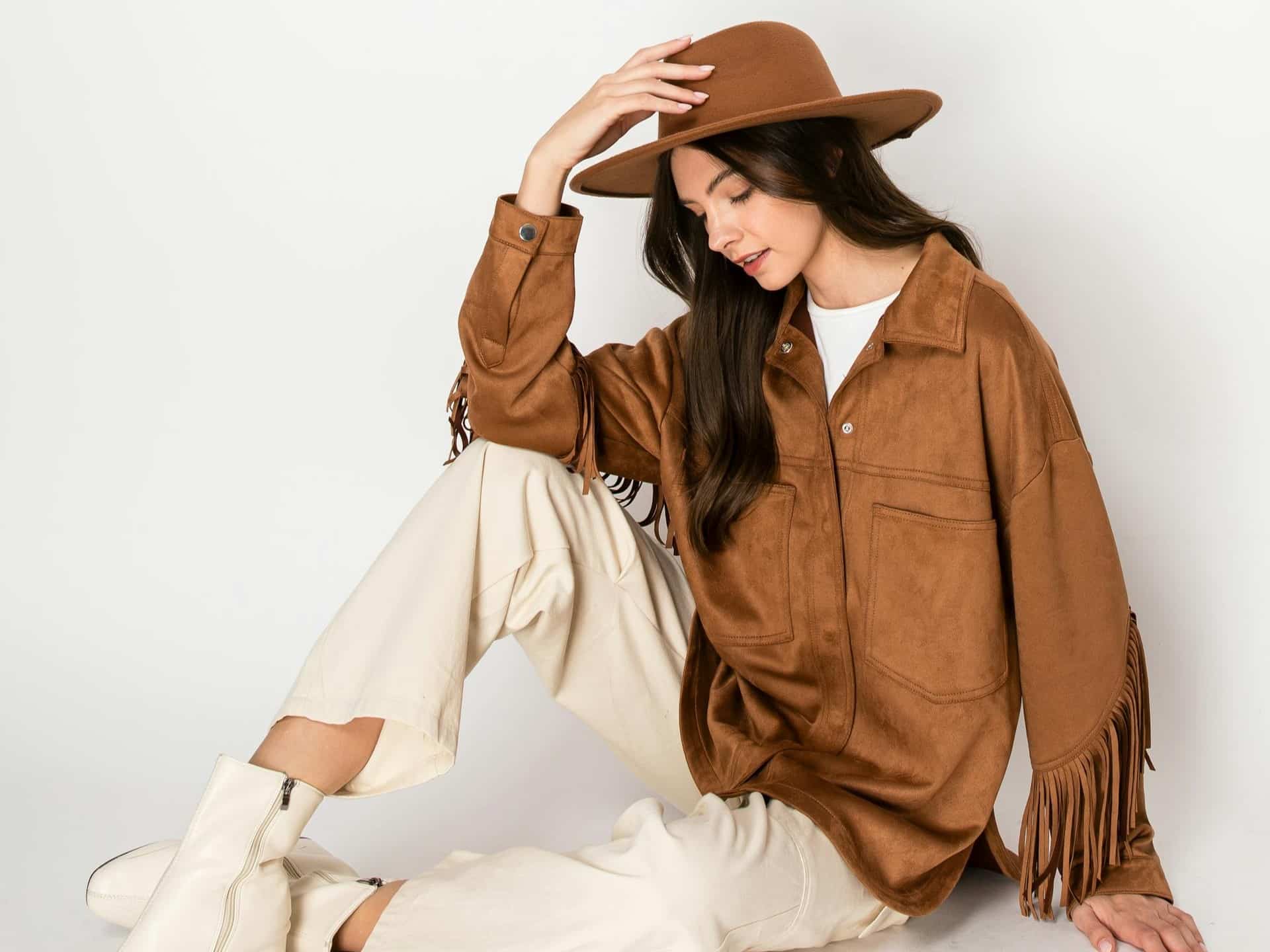
Suede fabric is a fancy material known for being soft. It feels smooth and has a velvety look that people love. Suede is made from the underside of animal skins, giving it a special style. It is light and easy to use, making it popular in fashion. People use suede to make jackets, shoes, and bags. Suede is also used in home décor to make furniture and accessories look classy.
Faux suede has become more popular because it costs less and is better for the environment. The market for fake suede was worth $1,106.9 million in 2022. Experts think it will grow to $2,167.2 million by 2031. This shows that suede is still loved in fashion and home design.
Key Takeaways
Suede is a soft and smooth fabric made from the inside of animal skins. It is often used for jackets and shoes.
Faux suede is a cheaper and eco-friendly option. It looks like real suede but doesn’t use animal materials.
Suede needs special care to stay soft and look nice. Keep it away from water and clean it with a suede brush.
Knowing how suede and leather are different helps you pick the right one. Suede feels softer, but leather lasts longer.
Suede can be used for many things, like clothes and home decorations. It is a stylish choice for lots of products.
What Is Suede Fabric?
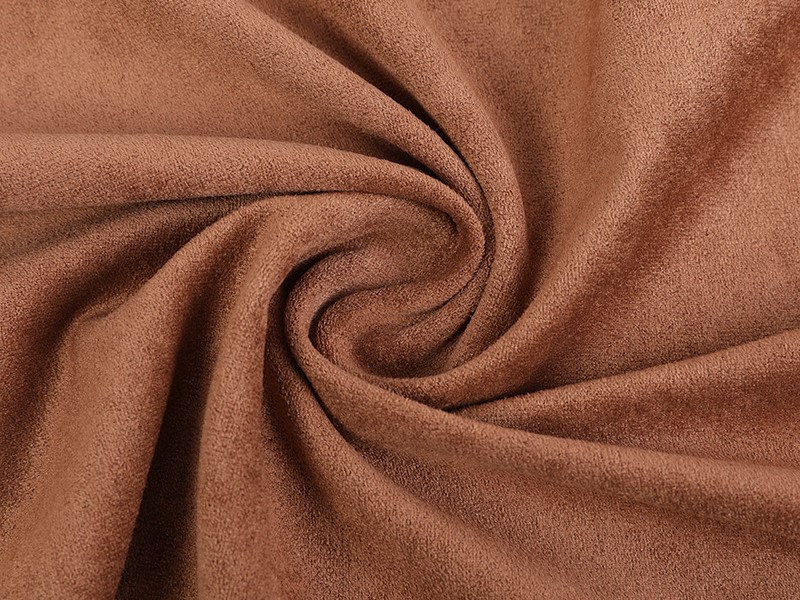
Suede fabric is a fancy material that feels soft and smooth. It is loved in fashion and home décor because of its special qualities. But what makes suede unique? To understand, you need to know how it’s made and why it’s different from other materials.
How Suede Is Made
Suede is made from animal hides. The underside of the hide is softer and thinner than the top. This softer part is separated in a process called splitting. The result is split leather, which is used to make suede.
Here’s how suede is made:
The soft underside of the hide is separated from the tough top.
The split leather is treated and brushed to feel velvety.
The softness depends on the animal used. Younger animals make softer suede, while older ones make rougher suede.
Some makers flip the leather to show the underside, keeping it strong like full-grain leather.
This process shows the skill needed to make suede. It also explains why suede is softer and lighter than regular leather.
Did you know? The market for car interior suede is growing by 4.8% each year. This shows how suede is becoming more popular in fashion and cars.
Characteristics of Suede Fabric
Suede has features that make it special for many uses. Its soft, velvety surface gives it a rich and fancy feel. Here’s a simple look at suede’s key traits:
Property | Suede Fabric | Cotton | Leather | Velvet |
|---|---|---|---|---|
Fiber Length | Short, brushed fibers for a soft surface | Long, smooth fibers | Tough, polished surface with no fibers | Packed, longer upright fibers |
Durability | Light, flexible, less strong than leather | Strong but can fray over time | Very strong, hard to tear | Delicate, wears down easily |
Softness | Velvety and cozy, great for fashion | Soft, breathable, lightweight | Smooth but not as soft as suede | Softer than suede, feels richer |
Color Retention | Absorbs dyes well, bright colors | Holds dye but may fade | Keeps color better due to treated surface | Deep colors but fades in sunlight |
This table shows why suede is so loved. It’s soft, flexible, and velvety, making it perfect for clothes, shoes, and bags. But since it’s lightweight, it’s not as strong as leather and needs care.
Another great thing about suede is how well it absorbs dyes. This helps create bright colors, making it even more popular in fashion and design.
Tip: Want something soft and fancy? Suede is a great pick. Just handle it gently to keep it looking nice!
How Suede Differs from Leather
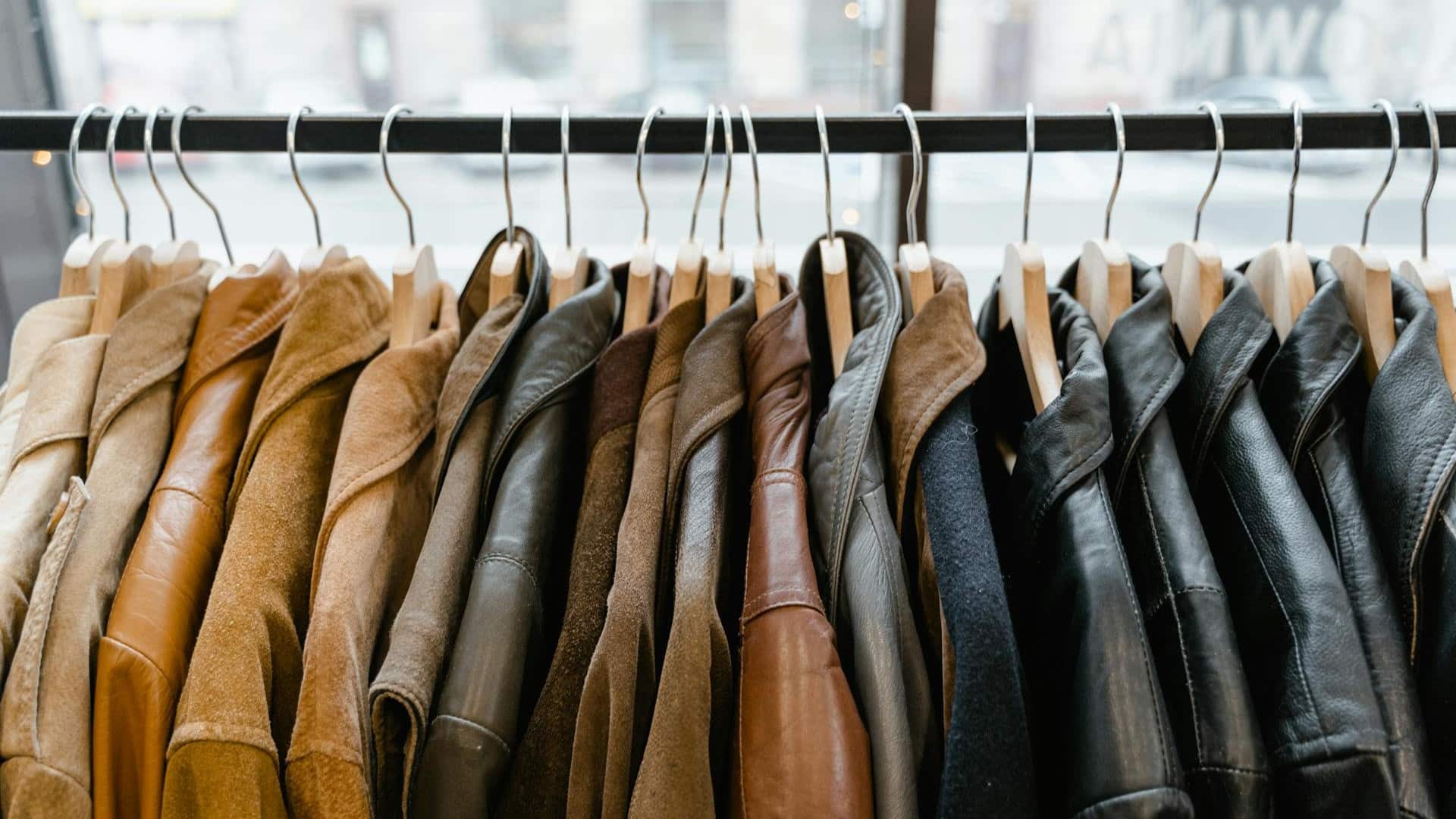
Texture and Appearance
Suede and leather look and feel very different. Suede has a soft, fuzzy surface that feels like velvet. This gives it a fancy, matte look, perfect for shoes and bags. Leather, however, is smooth and can be shiny or matte. It feels firm and polished, making it great for formal items.
Here’s a simple comparison of their texture and look:
Feature | Suede | Leather |
|---|---|---|
Texture | Soft, fuzzy surface | Smooth, shiny or matte |
Appearance | Matte, fancy look | Polished, formal look |
Flexibility | Very bendable | Stiffer |
Common Uses | Fashion items | Formal and professional items |
Suede bends easily, so it’s great for soft items. Leather is tougher and works well for strong, long-lasting products.
Tip: Want something soft and trendy? Pick suede. Need something strong and polished? Go with leather.
Durability and Maintenance
Suede and leather also differ in how strong they are. Suede is thinner and wears out faster. Its soft surface can get damaged by water or rough use. Over time, suede may crack or lose color. Leather is much stronger and lasts longer. It even looks better as it ages, developing a unique shine.
Key points about durability:
Suede is delicate and needs gentle care to avoid damage.
Leather is tough and handles wear and tear better.
Fake suede stays the same over time, unlike real suede.
Different parts of animal hides affect how durable each material is.
Suede needs more care to stay nice. Keep it away from water and stains, as cleaning it is hard. Leather is easier to clean but needs conditioning to stay soft and crack-free.
Note: For a long-lasting, low-maintenance option, choose leather. If you love suede’s softness, be ready to spend time caring for it.
Common Use Cases
Suede and leather are used for different things because of their unique features. Suede’s softness and flexibility make it great for fashion. You’ll see it in shoes, bags, and jackets. It’s also used in home décor to make furniture look fancy.
Leather, being strong and polished, is used for formal and professional items. Think of leather belts, briefcases, and luxury furniture. It’s also common in car interiors for its durability and classy look.
Here’s how suede is often used:
Application Area | Description |
|---|---|
Instrument Cases | Suede adds protection and style. |
Tool Roll Pouches | Durable and stylish for holding tools. |
Display Cases | Makes items look elegant on display. |
Weight Cases | Protects items with a premium feel. |
Lining Applications | Used as soft linings for various products. |
Tool Pallets | Keeps tools organized and safe. |
Suede is also popular for furniture, car interiors, and even laptop sleeves. Its versatility makes it useful in many industries.
Fun Fact: Suede’s market value is expected to grow from $3.5 billion in 2023 to $5.7 billion by 2032. This shows how much people love its unique qualities!
Different Types of Suede Fabric
Suede fabric comes in different types, each with special features. Knowing these types helps you pick the best one for your needs.
Natural Suede
Natural suede is made from the underside of animal skin. It feels soft and smooth, making it great for shoes, jackets, and bags. Genuine suede, a kind of natural suede, is softer but not as strong as leather. It is very flexible and comfortable to wear.
Natural suede takes in dyes well, creating bright colors for clothes and accessories. But it needs careful care to avoid water and stain damage. If you want something fancy and real, natural suede is a good choice.
Faux Suede
Faux suede is a man-made material that looks like natural suede. It’s made from things like polyester and polyurethane. It feels soft but doesn’t use animal skin. Faux suede is easier to clean because it can go in the washing machine.
You can find faux suede in furniture, clothes, and more. It’s cheaper and better for the environment. People who want cruelty-free options like faux suede. Popular types include Ultrasuede and Alcantara, which are strong and look fancy.
Tip: Faux suede is great if you want suede’s look without the hard cleaning or animal use.
Split-Grain Suede
Split-grain suede is made by cutting animal skin into layers. The bottom layer is brushed to make it soft and velvety. This suede is thinner and softer than full-grain leather, so it’s good for lightweight items.
Split-grain suede is used for gloves, linings, and decorations. It’s not as strong as other suedes, so handle it gently. Even though it’s delicate, people love it for its soft feel and classy look.
Here’s a simple comparison of suede types:
Type of Suede | Description |
|---|---|
Genuine Suede | Made from animal skin, soft but less strong than leather. |
Ultrasuede | Synthetic suede made of polyester and polyurethane, washable. |
Alcantara | Like Ultrasuede, used for fancy items, also washable. |
Sueded Silk | Silk treated to feel like suede, washable. |
Sueded Cotton | Cotton processed to look like suede, washable. |
Nubuck vs. Suede
Nubuck and suede may feel soft, but they are different. Their texture, strength, and uses set them apart.
Nubuck is made from the outer part of animal hides. This top layer is sanded lightly to feel smooth and fancy. Suede, however, comes from the underside of the hide. This makes it softer but not as strong as nubuck. Nubuck feels polished, while suede is cozier and more bendable.
Here’s how they differ:
Nubuck feels smooth and fancy, while suede feels soft and fuzzy.
Nubuck is stronger because it uses the tough outer hide. Suede is thinner and more delicate.
Nubuck works well for furniture backs or fashion items. Suede is great for clothes and accessories but needs careful handling.
Both materials take dyes well, creating rich colors. Nubuck lasts longer, making it better for durable items. Suede is lighter and more flexible but wears out faster.
When choosing, think about how you’ll use the item. Pick nubuck for strong, fancy pieces. Choose suede for soft, stylish items if you can care for them.
Tip: Keep nubuck and suede away from water and rough surfaces. Clean them often to maintain their soft textures.
Advantages and Disadvantages of Suede
Benefits of Suede Fabric
Suede has many great features that people love. Its soft feel is gentle on your skin, making it comfy for clothes and accessories. Suede looks fancy and adds style to outfits or home décor. It’s perfect for creating a classy and stylish vibe.
Suede is also very useful. It’s great for jackets, shoes, bags, and furniture. Faux suede is a strong option that feels like real suede. It’s easier to clean and take care of, making it good for daily use. Faux suede is also a great choice for people who want cruelty-free and cheaper options.
Another cool thing about suede is how well it takes in dyes. This makes bright colors that stand out, whether it’s a jacket or home cushions. Its softness and versatility make suede a favorite for many uses.
Drawbacks of Suede
Even though suede is great, it has some downsides. It’s delicate and can get damaged by water, stains, or rough use. You’ll need to handle it carefully to keep it nice. Faux suede is tougher, but natural suede needs more care.
Suede isn’t very strong. It feels soft and fancy but doesn’t last as long as leather. Over time, it might wear out or lose its texture. This makes it less ideal for heavy use. Cleaning suede is also tricky. You’ll need special tools to clean it without ruining the fabric.
If you want something stronger, faux suede is a better pick. But remember, suede’s delicate nature and care needs are important to think about before buying it.
What Is Suede Used For?
Suede is a soft material used in many industries. Its smooth feel and fancy look make it popular in fashion, home décor, and more. Let’s see how suede is commonly used.
Fashion and Accessories
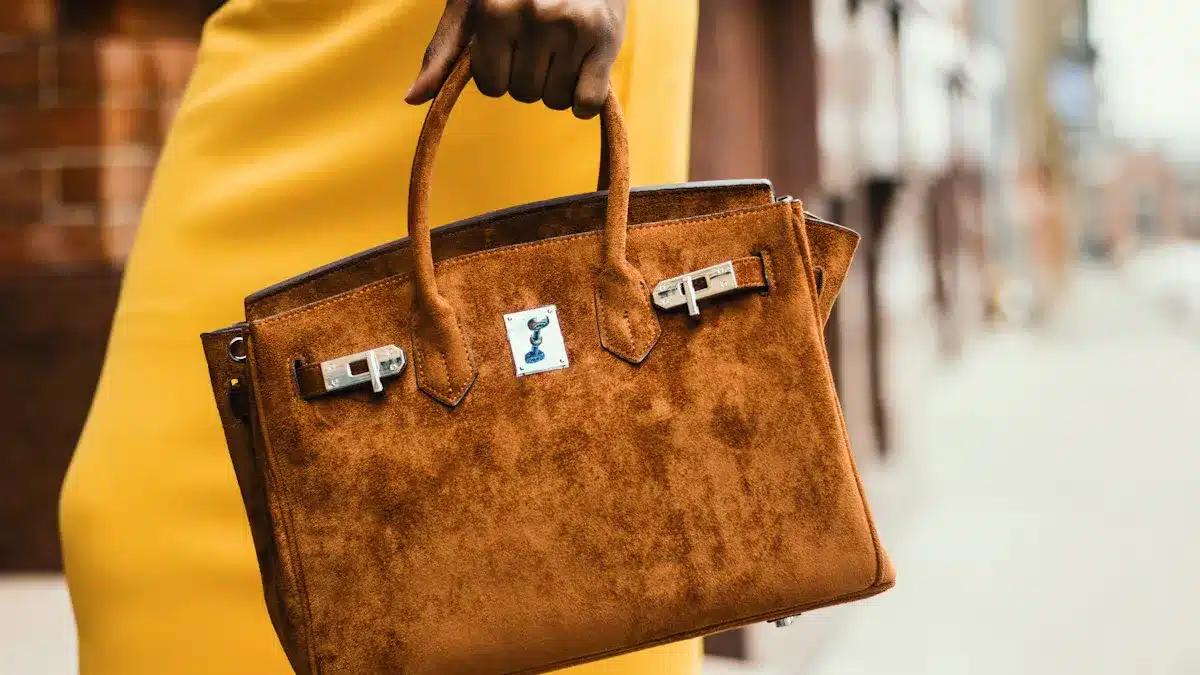
Fashion loves suede for its softness and flexibility. It’s often used in jackets, boots, bags, and belts. Suede absorbs dyes well, creating bright colors for trendy items. It’s also lightweight, making it comfy to wear.
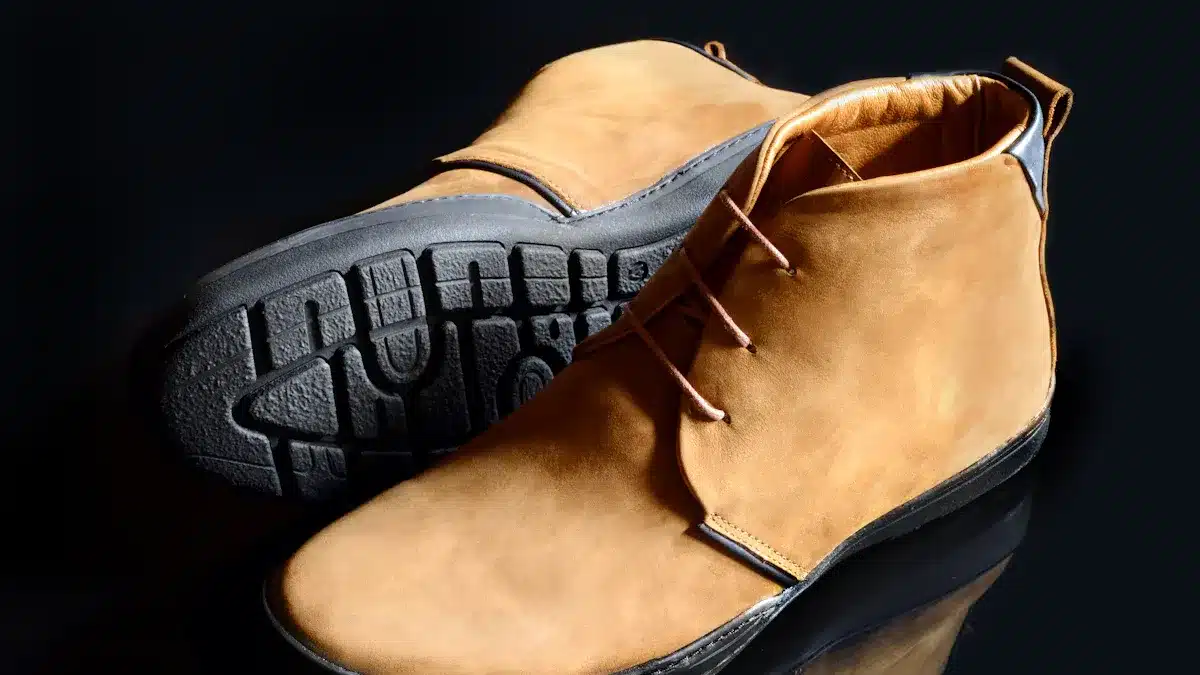
Suede isn’t just for regular clothes. It’s now used in high-end sportswear too. Special suede for performance wear is becoming more popular.
Here’s how suede is used in fashion:
Segment | Market Share (%) |
|---|---|
Apparel | |
Footwear | 25 |
Case & Bag | 15 |

Tip: Want stylish and comfy clothes? Suede is a great pick!
Furniture and Home Décor
Suede is also loved for furniture and home décor. Its soft surface adds a fancy touch to sofas, chairs, and cushions. Suede looks great in modern homes, matching well with wood and metal.
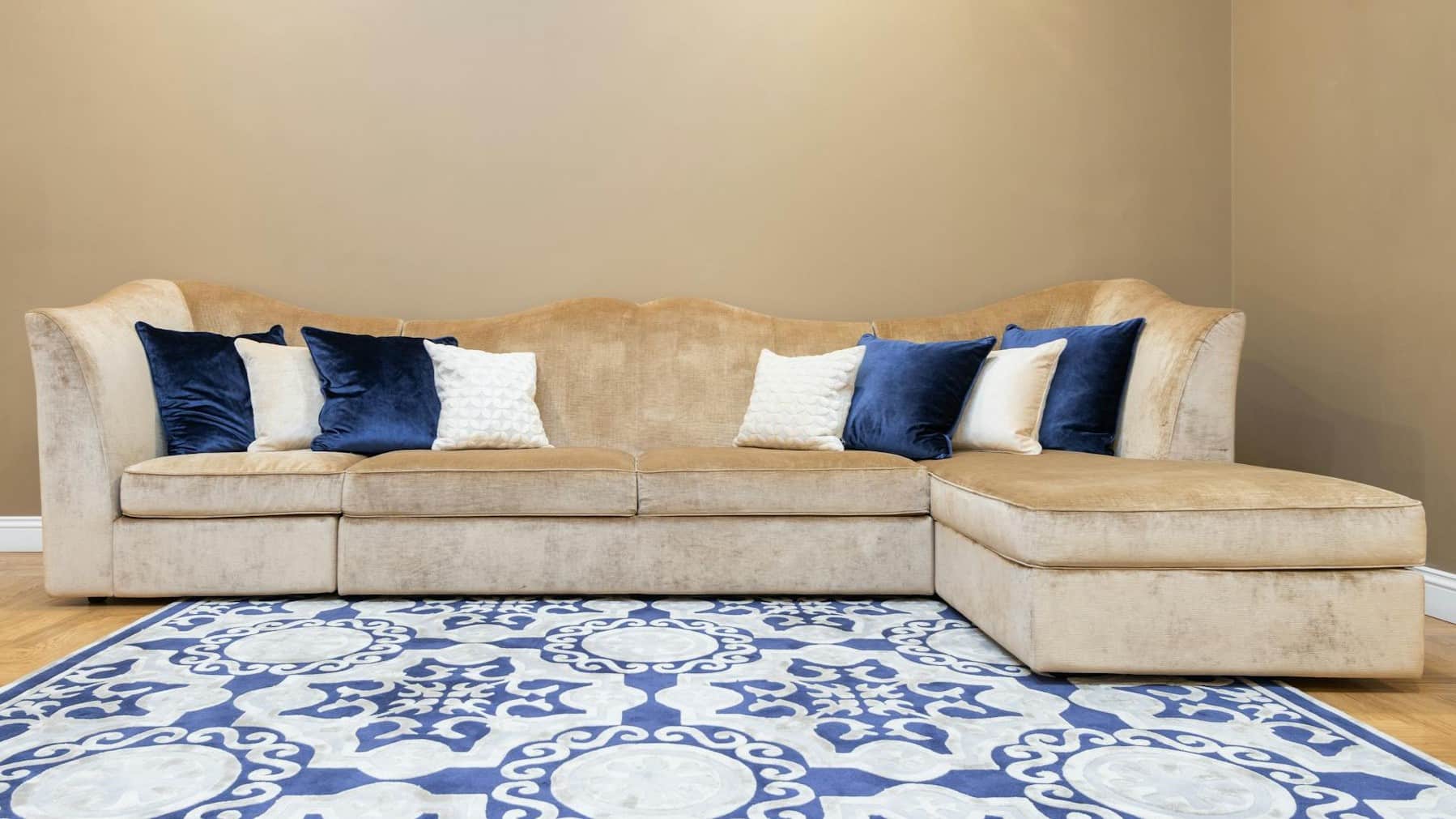
Furniture makers like suede because it feels cozy and looks classy. Faux suede is especially popular since it’s durable and easy to clean. About 15% of the suede market is for furniture, and smaller items like decorations are growing in demand.
Note: Keep suede furniture out of sunlight. Use a soft brush to clean it.
Other Applications
Suede is used in many other ways too. It’s found in car interiors because it feels fancy and lasts long. Suede is also used for tool pouches, instrument cases, and laptop covers. These uses show how useful suede can be.
In cars, suede makes up 5% of the market. It’s great for car seats and dashboards because it’s soft and strong. Smaller items like display cases and linings also use suede.
Suede is a favorite for many products. Whether it’s for clothes, furniture, or creative projects, suede offers endless possibilities.
How to Care for Suede Fabric
Cleaning and Maintenance
Suede needs special care to stay clean. Its soft surface can easily get dirty or stained. Use a suede brush to remove dust gently. Brush in one direction to avoid harming the fibers. For tough stains, try a suede eraser or a white pencil eraser. Rub softly until the stain fades.
If suede gets wet, blot it with a dry cloth. Don’t rub, as this spreads the moisture. Let it air dry naturally. Avoid using heat or sunlight to dry it faster. Once dry, brush it again to bring back its soft texture.
For deeper cleaning, use a suede cleaner. Test the cleaner on a hidden spot first to check for discoloration. Follow the instructions carefully to keep your suede looking nice.
Tip: Regular brushing stops dirt from settling into suede fibers.
Protecting Suede from Damage
Suede is fragile and needs protection from water, stains, and scratches. Use a suede protector spray to guard it against moisture and dirt. Pick a spray made for suede and apply it evenly. Let it dry completely before using the item.
Don’t wear suede in rain or snow. Water can ruin its texture and leave marks. If you must go outside, carry an umbrella or wear protective covers for your shoes.
Keep suede away from sharp edges and rough surfaces. Scratches can harm its soft fibers. Handle suede items gently to keep them looking good.
Note: Protecting suede early saves money on repairs later.
Proper Storage Tips
Store suede the right way to keep it in good shape. Place suede items in a cool, dry area. Avoid humid places, as moisture can cause mold or fading. Use fabric bags that let air flow instead of plastic ones.
Hang suede jackets on padded hangers to avoid wrinkles. For shoes or bags, stuff them with tissue paper to keep their shape. Don’t stack suede items, as this can flatten the fibers.
If storing suede for a long time, check it now and then for damage. Brush it lightly to keep the fibers fresh. Good storage keeps suede soft and stylish for years.
Tip: Keep suede away from sunlight to stop fading.
Suede fabric is known for being soft, fancy, and useful. Unlike leather, suede has a smooth, matte look that feels silky. It’s a popular choice for fashion and home décor. Suede is light and breathable, making it great for jackets, shoes, and accessories. But its delicate surface needs extra care to avoid damage.
Taking care of suede is important to keep it nice. Brush it often, protect it from water, and use special cleaners to maintain its softness. Here’s a simple breakdown of suede’s main features:
Category | Details |
|---|---|
Characteristics | Made from the underside of animal skin, suede has a soft, silky texture with short fibers. It’s breathable, durable, and works well for clothes and decorations. |
Advantages | Looks fancy, feels comfy, and cleans well. Suede is loved in high-end fashion for its classy style. It’s also lighter and more breathable than many other materials. |
Disadvantages | Doesn’t resist dirt or water well, stains easily, and needs careful cleaning. |
Applications | Used for jackets, shoes, belts, gloves, and other stylish items because it’s flexible and looks great. |
Care Practices | Needs special cleaning tools like suede erasers or cleaners. Baking soda can help too. Suede can’t go in the washing machine, so regular care is a must to keep it looking good. |
If you’re worried about the environment, faux suede is a great option. It’s cruelty-free and still looks and feels like real suede. By choosing wisely and caring for your suede items, you can enjoy their beauty and usefulness for a long time.
FAQ
What is the difference between suede and faux suede?
Suede is made from animal skin, but faux suede is man-made. Faux suede looks and feels like real suede but costs less. It’s cruelty-free, easier to clean, and lasts longer. This makes it a smart and eco-friendly choice.
Can suede be worn in rainy weather?
Suede doesn’t do well with water. Rain can ruin its soft texture. Use a waterproof spray to help protect it. Still, avoid wearing suede in heavy rain or snow. Faux suede is better at handling moisture.
How do you clean suede shoes?
Use a suede brush to clean off dirt. For stains, gently rub with a suede eraser or a white pencil eraser. Don’t use water to clean suede. If the stain stays, try a suede cleaner and follow the directions.
Is suede environmentally friendly?
Real suede comes from animal skin, which raises concerns. Faux suede is a better option for the environment. It’s made from synthetic materials and doesn’t harm animals. Pick faux suede for a kinder, greener choice.
How can you store suede items properly?
Store suede in a cool, dry spot. Use fabric bags that let air flow instead of plastic ones. Hang jackets on padded hangers. Stuff shoes or bags with tissue paper to keep their shape. Don’t stack suede items to avoid flattening them.

